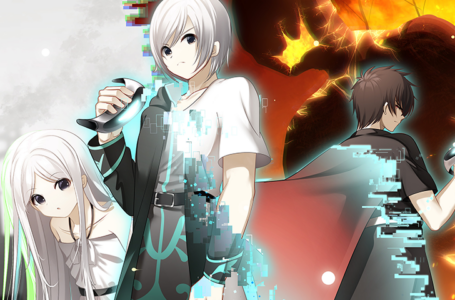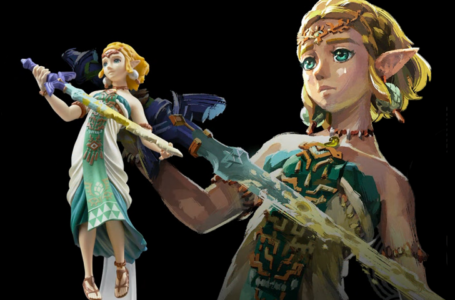Octopath Traveler Review (Switch)
I love traditional JRPGs, and I mean I love them a lot, so it was unlikely that I was going to go into Octopath Traveler with an overly open mind. But after playing through the incredible action-JRPG, Ys VIII, I needed something a little more comforting, but was the game the big thick, number-heavy cosy blanket I needed in my life?
The story, or rather stories, of Octopath Traveler span out across the entire world of Orsterra with each of the eight characters having their own motivations for embarking on their individual journeys as well as for joining the players motley crew. The way the character narratives unfold are through chapters, with the initial chapters being an introduction not only to their reasoning for going on the quest, but their mechanics as well, and latter chapters developing their tale.
Here lies the main narrative hook of the game, all of the main eight characters are individuals each with their own story to chase; they don’t necessarily need to be part of a group to succeed in their goals, but being part of something bigger balances out their flaws and supports them in ways that they need, such as the narrative text informing the player that H’aanit will need fierce allies to help her find her mentor.
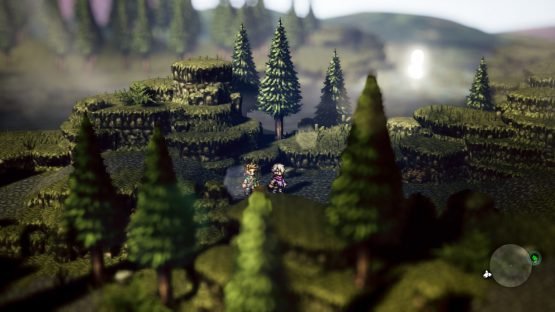
This distinction between characters even carries over to the individual character traits that can be used both inside and out of the battles that are related to their archetype, whether it be Cleric, Thief or Scholar. Outside of battles, the characters can use what are called Path Actions to perform certain reactions to their environment, settings or other characters.
As such, his gives the basic exploration and each individual town a very unique feel that’s entirely dependent on your party, with all of the NPCs fulfilling different roles depending on who you have with you. For instance, most towns contain a number of hidden items that you can coax the location of out of the townspeople using Alfyn or Cyrus’ Path Actions (‘Inquire’ and ‘Scrutinze’ respectively).
These Path Actions will level up as you progress throughout the game, allowing their use against the more resilient NPCs, as with some of the Actions your failure will work towards lowering your Reputation in the town, which becomes an eventual expensive thing to undo. For instance, if you want to Steal from a townsperson and the chance on it succeeding is 60% or lower, you might want to reconsider until you’re a more capable thief.
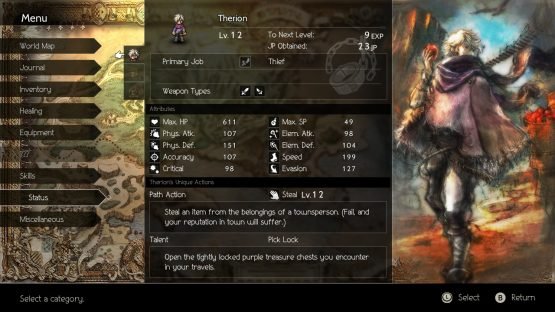
As another layer of depth to the game, every character will have a set of skills that can be unlocked in any other (once you have the appropriate level of points to invest), that can give the character a variety of additional abilities dependent on their class. Also, once a certain amount of Skills are unlocked, the character will receive equippable Passive Skills which will augment them in certain ways such as increasing their max HP, or lowering the random encounter rate.
Octopath Traveler wouldn’t be a JRPG without turn-based battles that start as random encounters, and luckily it not only echoes this classic battle structure in every way, it also brings new strategic elements to the formula with the ‘Break’ and ‘Boost’ systems. The ‘Boost’ system allow the use of multiple attacks by any given character (up to a maximum of four per turn), which will accrue if only a single action is taken the previous turn, essentially deferring a second attack.
These will appear in the top right corner, near the lifebars of your party as glowing yellow orbs. You can have up to a maximum of five of these stored at any one time, although you can only use three at once, and form one half of the main dichotomy of how this game can be effectively played. For effective battle strategies, you should get into the habit of using the ‘Boost’ mechanic to manipulate the ‘Break’ System.
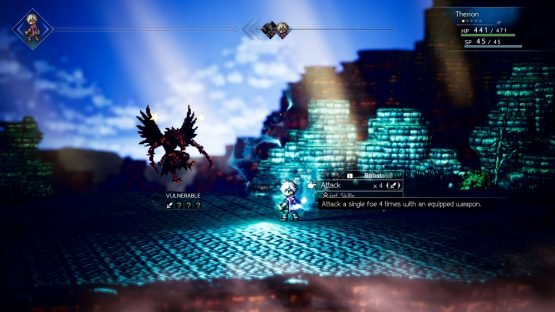
The ‘Break’ System is a way of exploiting your enemies weaknesses to cause most damage. Every enemy will have a little shield next to their sprite along with a set of boxes, the boxes detailing the enemy’s particular weaknesses and the shield showing how many times you need to hit them with these weaknesses before they break. Once broken, the enemy will not be able to act in any way until they recover, so then the player can use this reprieve however they see fit.
In battles, each character has different ‘Talents’ that impact on how easily you can take down the enemies. Some of the characters can summon aid, who might have different strengths than the character in question, one can concoct salves for allies and poisons for enemies, and one can immediately reveal a weakness of your opponents at the beginning of a fight. Needless to say, a good mix of characters in your team is basically essential for success
Then, finally, there are the boss encounters, which stand as true tests of the players skill and strategic thinking. Usually these are large and powerful enemies that can do colossal damage, have enormous life pools, and require a lot of hits to break. It’s here that your use of Boosts are essential, do you break your opponent quickly and wail damage on them? Or do you hold off on breaking them until they buff themselves for a powerful strike? The amount of choice awarded to the player is huge, and every success feels ultimately earned as it was won on your terms.
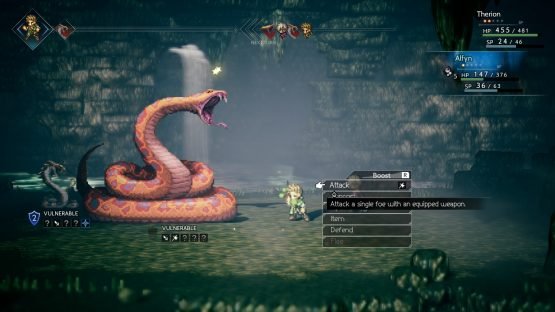
In fact, the only negative I can place upon the game sometimes wriggles in during the boss battles, which is that sometimes certain battles can feel unnecessarily dragged out owing to engorged amounts of health needing to be whittled down. This can lead to some battles feeling like they outstay their welcome somewhat, but this is a very minor complaint with a battle system that feels this dynamic and flexible.
There are many more facets to this game beyond this basic description of the battle and exploration mechanics, which only serve to enrich the gameplay experience. I’m not going to discuss them here as they are wonderful things to find and experiment with, and I really do not wish to spoil anything the game has to offer (hence my purposely vague description of the narrative), and definitely would not want to run the risk of influencing how you would play.
Octopath Traveler has received a lot of attention for its visuals, and this is with extremely good reason as this game is utterly breathtaking to behold. The pixel art locations and characters are enveloped in a beautiful high definition sheen that gives the whole game the impression of being a playable pop-up book with the best possible lighting. I think the best description I can think of for the visuals is that it’s as if Final Fantasy VI made love to an intricate lighting feature from Ikea and this is the glorious offspring (and this isn’t even including that lush watercolour character art into the equation either).
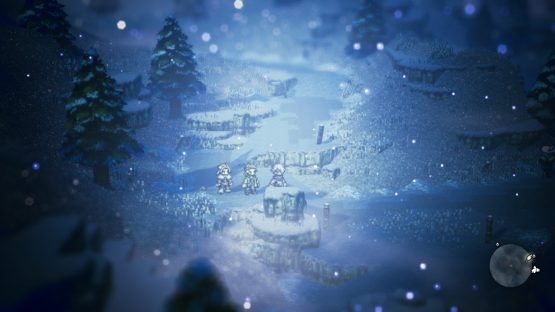
I haven’t, however, heard many people talk about the music in this game and it definitely deserves more focus. Sure, the game looks so beautiful that if my pixel loving younger self saw it they would likely cry, but that soundtrack would likely bring him to tears too. Choosing to bring the sound design very closely to that of classic JRPGs, the music has a very grandiose, epic feel to it.
So, should you get Octopath Traveler? If you haven’t already, and you have a Switch, then get on this immediately. This is one of the best examples of the JRPG genre in years and is an indisputably solidly constructed game from the ground up. Also, it’s a bonafide visual treat. It says a lot that, when it came to picking the images to use from my gameplay in this review, that I had a lot to sift through. I mean, come on, you at least owe it to yourself to try this game, there’s a demo right there on the eShop. As for me though, this game is absolutely essential for any Switch library, and I don’t say that lightly.
Thank you to Nintendo for kindly supplying a review code for this fantastic game.
- New Persona 5 Royal Trailer Introduces Kasumi And Special Edition Revealed - June 6, 2019
- New Bloodstained: Ritual of the Night Character Revealed Ahead Of Release - May 31, 2019
- Final Fantasy XIV: Shadowbringers Preview - May 29, 2019




